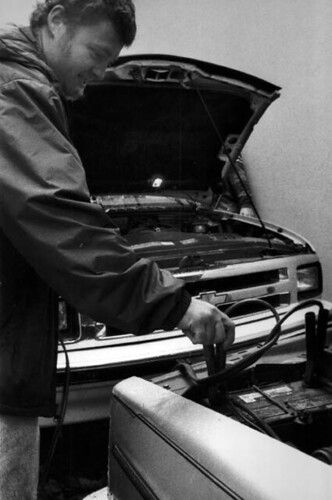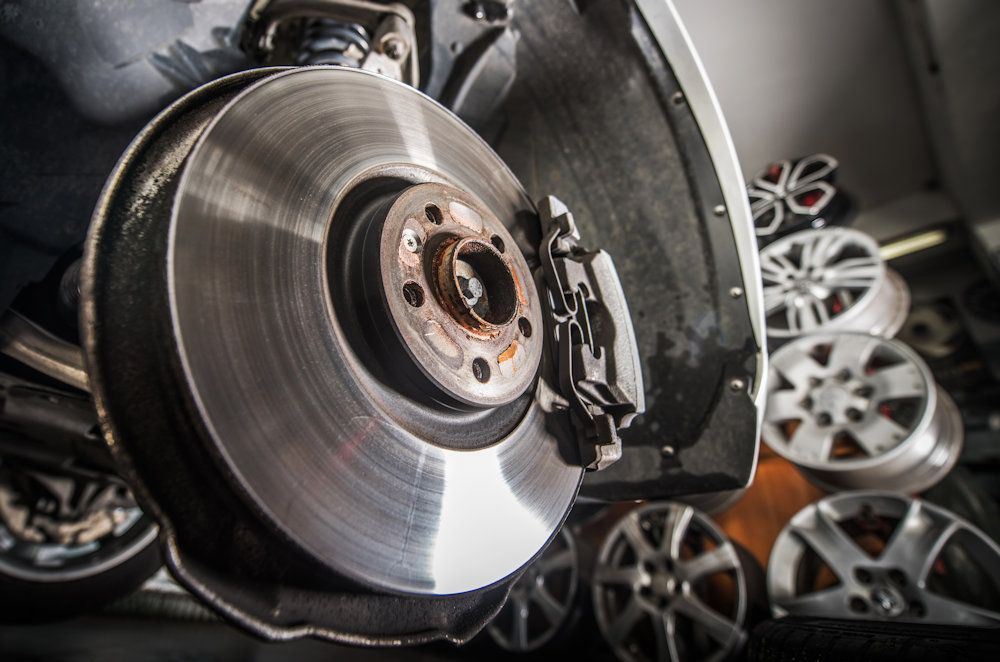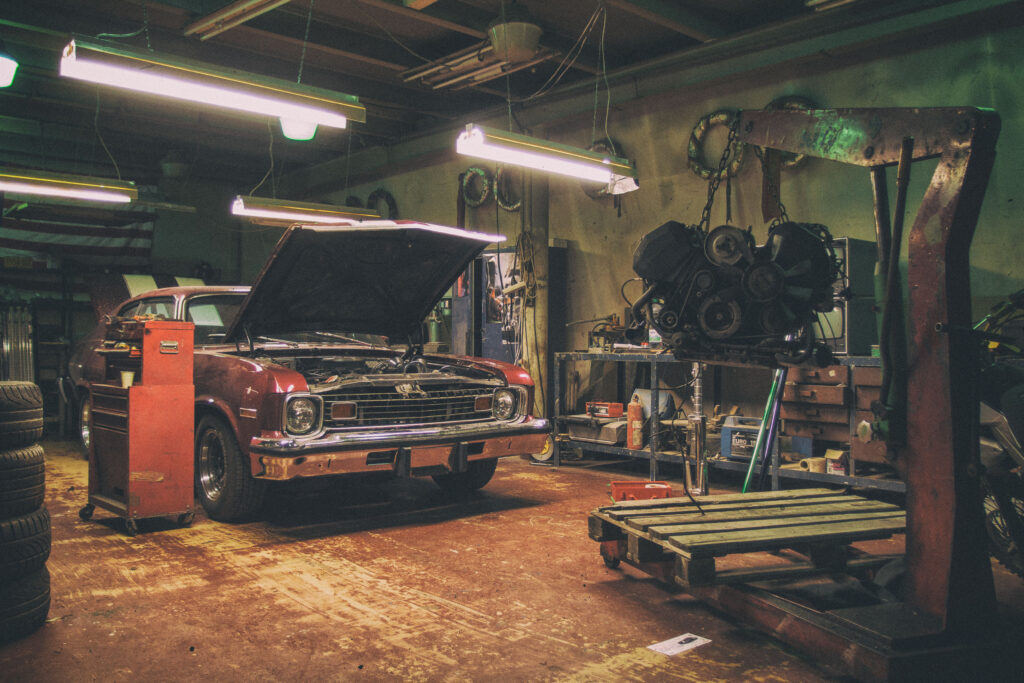
Everyone loves the thrill of a good deal, a smart save, a chance to keep a few extra dollars in the pocket. It’s a natural inclination, especially when the price tags on everything from groceries to top-tier auto parts seem to be perpetually on the rise. In an economy that feels more tumultuous than a drag race on a gravel track, the temptation to “price-shop” for components is incredibly strong, whether you’re a seasoned mechanic running a bustling shop or an everyday driver just trying to keep your daily ride reliable.
But here’s the cold, hard truth that often gets buried beneath that enticingly low sticker price: what seems like a financially sound alternative in the short term almost always morphs into a devastating financial burden in the long run. We’re not just talking about a minor inconvenience here; we’re delving into a cascade of problems that can ruin your business’s reputation, drain your profits, compromise the very integrity of your equipment, and, most critically, endanger lives. The initial savings from a cheap part are often quickly eclipsed by hidden costs that can make you wonder if you’ve been driving backwards.
So, before you spend another valuable moment trawling the internet for the cheapest deal on a door lock actuator, an alternator, or even a set of brake pads, let’s pull back the curtain. We’re going to take an unvarnished look at the insidious ways low-quality auto parts chip away at more than just your budget. We’ll expose the real, tangible consequences—the hidden costs and operational nightmares—that arise when corners are cut, and why, ultimately, investing in quality is not just a smart decision, but an absolutely essential one for your wallet, your vehicle’s longevity, and your peace of mind.

1. **Frequent Part Failures**When we talk about cheap components, we’re often talking about parts engineered for rapid obsolescence. These aren’t just less durable; they’re fundamentally designed with cost-cutting at their core, meaning they utilize substandard materials and manufacturing processes that simply cannot stand up to the rigorous demands of automotive operation. Think low-quality motors struggling to maintain consistent power, brittle plastic gears destined to strip under minimal stress, or poorly soldered circuits just waiting for the first significant vibration or temperature fluctuation to give up the ghost. The unfortunate reality is that these components often lead to failure not in years, or even months, but in mere weeks.
This isn’t just an isolated incident; it’s a recurring nightmare. For a repair shop, a part failure necessitates repeat labor to reinstall the same component, effectively doubling or even tripling the time and effort invested without any additional revenue. It’s a direct hit to your efficiency, eating into valuable technician hours that could be spent on new, profitable jobs. For a vehicle owner, it means more downtime, more trips to the mechanic, and the sinking feeling that you’ve been let down by what was supposed to be a solution.
The repercussions extend far beyond the immediate repair. Each premature failure translates into more customer complaints, often escalating into warranty claims that chip away at your profit margins. But perhaps most damaging is the erosion of trust and the tarnishing of your brand or shop reputation. When a customer’s ‘new part’ fails almost immediately, their frustration and disappointment aren’t directed at the anonymous manufacturer of the cheap component; they’re aimed squarely at the business or individual who installed it. This reputational damage can be incredibly difficult, if not impossible, to mend, creating a ripple effect of negative reviews and lost future business.
Read more about: The Futile Fight: Why Studios and Brands Can’t Erase Online Failures in the Social Media Age

2. **Labor Waste**Time is money, a cliché perhaps, but one that holds immutable truth, especially in the fast-paced world of automotive repair and parts installation. When a cheap part inevitably gives up the ghost, it’s not just the cost of the replacement component you’re losing; it’s the invaluable technician time—the skilled hands and experienced minds—that must be diverted to correct the prior error. Replacing the same actuator, sensor, or brake component twice isn’t merely a frustrating exercise in futility; it’s an actively unprofitable endeavor that directly impacts your bottom line.
Consider the direct financial implications: those lost shop hours could have been allocated to new, revenue-generating projects, servicing other vehicles, or tackling more complex diagnostics. Instead, they’re spent on rework, a zero-sum game where resources are expended without any corresponding increase in income. This inefficiency means fewer jobs completed per day, which directly constrains your capacity for growth and profitability. Each hour spent redoing a repair due to a faulty part is an hour stolen from potential new business.
The toll isn’t purely financial. Repeated failures and the subsequent rework create a palpable increase in stress on your entire team. Technicians who take pride in their work find their morale plummeting when their efforts are undone by inferior components. This heightened stress can lead to burnout, decreased job satisfaction, and even further errors, creating a vicious cycle. Ultimately, choosing cheap parts actively undermines the very productivity and well-being of your most valuable asset: your people.
Read more about: Sip Smarter, Live Better: The 12 Worst Drinks for Your Kidneys, According to Nephrology Specialists

3. **Return & Refund Management**Beyond the immediate labor and parts costs, the aftermath of a failed, low-quality component often leads to an administrative and logistical quagmire: the dreaded return and refund process. This isn’t a simple transaction; it’s a multi-faceted headache that consumes valuable resources and diverts attention away from core business activities. Bad parts inevitably generate more returns, initiating a cascade of paperwork, customer disputes, and often, contentious interactions that are taxing for everyone involved. Instead of focusing on proactive strategies for business growth, your team is bogged down in reactive problem-solving, simply treading water.
Each return carries its own set of tangible and intangible costs. There are the direct, unrecoverable shipping costs associated with sending the faulty part back to the supplier and receiving a replacement. Then there are the significant inventory headaches: managing defective stock, processing credits, and attempting to reconcile discrepancies. This can lead to what’s known as ‘dead stock’—parts sitting on shelves that can’t be sold, tying up capital and space. It’s an inefficient use of resources that directly impacts cash flow and operational agility.
More critically, managing these returns demands significant customer service resources. Your staff, who should be nurturing client relationships and fostering loyalty, are instead spending their time mediating disputes and handling complaints arising from product failures outside of their control. This detracts from their ability to deliver positive customer experiences and build new business, creating a negative feedback loop that harms both internal morale and external perception. The cost of managing these administrative burdens quickly outweighs any initial savings from the cheap part itself.
Read more about: 12 Tax Filing Mistakes That Could Trigger an IRS Audit: Essential Strategies for a Smooth Season

4. **Customer Trust Loss**In the fiercely competitive automotive repair and parts business, reputation isn’t just important; it is everything. It’s the bedrock upon which successful enterprises are built, cultivated over years of reliable service and consistent quality. When a customer invests their hard-earned money in a “new part” only for it to fail within days or weeks, a deep fracture forms in that foundation of trust. And let’s be absolutely clear: in the customer’s mind, they aren’t blaming some obscure overseas manufacturer; they’re blaming *you*—the shop, the mechanic, the business that recommended and installed the faulty component.
This loss of trust manifests in a multitude of devastating ways. The most immediate and obvious is the reduction in referrals. Satisfied customers are your best marketing tool, but a disgruntled one becomes an unwitting detractor, sharing their negative experiences with friends, family, and online communities. This leads to a proliferation of negative reviews on social media and industry forums, which can quickly erode your online credibility and deter potential new clients before they even step through your doors. In an age where online reputation is paramount, a single scathing review can inflict disproportionate damage.
Ultimately, the hidden cost here is the loss of lifetime customer value. A customer who has lost faith in your service isn’t just a one-time lost sale; they represent years, possibly decades, of potential business—maintenance, repairs, new purchases. This intangible cost, the forfeiture of a long-term relationship, far eclipses any minuscule savings from opting for a cheap part. Once trust is broken, it’s an incredibly arduous journey to rebuild, often requiring significant investment in compensatory services or discounts. It’s a gamble with stakes too high to ignore.
Read more about: From Billionaires to Royals: 14 Mega-Rich Celebrities Who Opt for Totally Humble Cars (And We’re Obsessed With Why!)

5. **Missed Revenue Opportunities**While you and your team are caught in the relentless cycle of fixing past problems caused by cheap, unreliable parts, your more astute competitors are free to focus on the future. They are investing their time and resources into attracting new customers, enhancing their service offerings, optimizing operational efficiencies, and exploring innovative ways to grow their businesses. This creates a widening chasm, where your business is effectively stalled, tethered to the mistakes of the past, while others surge ahead, capitalizing on the very opportunities you’re missing.
This isn’t just about losing out on potential new clients; it’s about the profound opportunity cost of lost focus. Every hour spent managing warranty claims, placating an upset customer, or reordering and reinstalling a failed component is an hour not spent on strategic planning, marketing initiatives, staff training, or exploring lucrative new service lines. Your strategic bandwidth is severely constrained, leaving little room for proactive growth. It’s like trying to win a race while constantly having to pit for unforeseen, preventable repairs.
In the long term, this sustained lack of focus on growth and innovation leads to significant damage to your brand positioning. You risk being perceived as a company that struggles with reliability or, worse, one that prioritizes low cost over quality—a perception that can be incredibly difficult to shake off. This not only stunts immediate business expansion but can also create a ceiling on your future potential, making it harder to attract premium clients or talented staff. The initial ‘savings’ from a cheap part become a heavy anchor, dragging down your entire enterprise.
Read more about: Kanye West’s Rollercoaster Fortune: Unpacking the Controversial Origins and Billion-Dollar Debates That Defined His Stardom

6. **Reduced Overall Quality and Reliability**The age-old adage, “you get what you pay for,” might sound trite, but its wisdom resonates profoundly when it comes to auto parts. The simple fact is that reducing costs, especially to the degree seen in cheap, bargain-bin components, almost invariably means sacrificing a product’s fundamental quality and reliability. These parts are often churned out using substandard materials and manufacturing processes, a stark contrast to the precision engineering and rigorous testing that go into higher-quality counterparts. This isn’t a minor compromise; it’s a foundational flaw that guarantees decreased durability and a dramatically higher likelihood of premature failure.
Take brake pads, for instance—a seemingly simple component but one that is absolutely critical to safety. Bargain brake pads, often made with inferior friction materials, wear down much faster, and unevenly. This isn’t just a matter of needing new pads sooner; it’s a cascading problem. Bad brake pads can quickly affect brake calipers, leading to uneven pressure, and accelerate wear on brake rotors, causing warping or scoring. This, in turn, can impact tire treads due to inconsistent braking, and, most alarmingly, compromise the entire braking system’s effectiveness, directly impacting safety if not taken care of immediately and correctly. Malfunctioning components aren’t isolated issues; they are often symptomatic of a larger system being compromised.
The initial promise of savings from these low-quality parts quickly evaporates when faced with the reality of subsequent, expensive auto repairs. These are repairs that could have been entirely avoided by the upfront investment in components manufactured to meet stringent quality standards. It’s a false economy, where the allure of a lower price tag blinds individuals and businesses to the inevitable and far costlier consequences of subpar performance and a dramatically shortened lifespan. Quality is not just a feature; it is the very foundation of reliability and longevity in any automotive part.
Read more about: Your Ultimate Single Car Solution: The Best Picks for Every Driver in 2025

7. **Diminished Vehicle Efficiency and Performance**Beyond the outright failures and the need for constant reworks, cheap auto parts carry another insidious hidden cost: a tangible degradation in your vehicle’s overall efficiency and performance. These components are rarely designed to meet the same exacting performance standards as their higher-priced, quality-assured counterparts. They often lack the precision engineering, the finely tuned tolerances, and the material integrity required to truly optimize a vehicle’s intricate systems. This isn’t just about theoretical numbers; it translates directly into a noticeably compromised driving experience and increased operational expenses.
Consider the heart of your vehicle’s performance: its engine and associated systems. A cheap fuel injector might not deliver the precise spray pattern or consistent flow rate of an OEM or high-quality aftermarket unit, leading to inefficient fuel combustion. This directly translates to reduced fuel efficiency, forcing you to fill up more often and erasing any initial savings at the pump. Similarly, subpar suspension components might not provide the precise damping or structural integrity needed for optimal handling, leading to a ‘floaty’ or unstable feel, particularly at speed or during cornering. This not only detracts from the driving pleasure but can also compromise safety.
Over time, the cumulative effect of these decreased performances becomes undeniable. The vehicle consumes more fuel, experiences reduced responsiveness, and may require more frequent visits to the mechanic to diagnose and correct seemingly unrelated issues that are, in fact, symptoms of a system compromised by low-quality parts. The initial cost-saving becomes a continuous drain, proving once again that a short-sighted decision on component quality ultimately costs significantly more than the judicious investment in reliable, high-performance parts would have in the first place. You pay for quality, whether you buy it or not.
Read more about: The Real Cost of Ownership: 10 Sedans That Become Money Pits After Five Years (And How to Avoid Them)

8. **Suspiciously Low Pricing (The ‘Too Good to Be True’ Trap)**Everyone loves a bargain. It’s almost ingrained in the gearhead psyche to hunt for that killer deal, that unexpected steal that makes you feel like you’ve gamed the system. But when it comes to critical auto components, that feeling of triumph can quickly turn into the bitter taste of regret, or worse, a roadside catastrophe. If a price tag on an alternator or a fuel injector seems shockingly low—we’re talking drastically below the established market range, like an alternator for under $80 when the fair reman price is $120-$250, or a fuel injector for under $50 when it should be $90-$200—it’s not just a good deal; it’s a giant, flashing red warning sign.
This isn’t shrewd negotiation; it’s simple economics. To offer parts at such cut-rate prices, manufacturers *must* be cutting corners, and often, they’re carving out huge chunks of quality. They’re skimping on materials, bypassing crucial quality control checks, and employing manufacturing processes that prioritize sheer volume over durability. The allure of a low upfront cost blinds too many to the inevitable and far costlier consequences of subpar performance and a dramatically shortened lifespan. It’s a false economy, folks, and your wallet—and your vehicle—will pay the true price later.
Think about it: what kind of company can afford to slash prices so aggressively? Usually, it’s one that isn’t investing in the precision engineering, the rigorous testing, or the quality materials that make a part reliable. As the wisdom goes, “you get what you pay for.” This isn’t just a quaint saying; it’s a fundamental truth when your vehicle’s health and your own safety are on the line. Prioritizing low cost over quality is a gamble with stakes too high to ignore. It’s time to stop letting sticker shock prevent you from making the smart, long-term investment.

9. **Vague or Non-Existent Warranties**A warranty isn’t just a piece of paper; it’s a solemn promise, a declaration of confidence from the manufacturer in the quality and longevity of their product. It’s their way of saying, “We stand behind this part.” So, when you encounter a part with either no warranty at all, or one so vague and restrictive it might as well be written in invisible ink, that should immediately set off your internal alarm bells. A reputable supplier will offer a solid warranty, typically ranging from 12 to 24 months, sometimes even covering labor. Anything less than that, especially a paltry “30-day warranty only” or “labor not included,” is a clear signal to proceed with extreme caution.
Why would a manufacturer shy away from guaranteeing their product for a reasonable period? Simple: they know it’s likely to fail. They’re effectively offloading the risk of premature failure onto you, the customer or the repair shop. When a company isn’t willing to back its own product, it’s a profound indictment of the component’s expected lifespan and reliability. Paul Campanella’s Auto & Tire Center wisely notes that “reputable manufacturers of quality car parts usually provide warranties or guarantees to ensure customer satisfaction and peace of mind.” Without these assurances, you’re left holding the bag if—or more accurately, *when*—that cheap part gives up the ghost.
The financial implications are far-reaching. Without a solid warranty, you could end up purchasing the same part repeatedly, annihilating any initial cost savings. For repair shops, this means eating the cost of replacement parts and unbillable labor. For vehicle owners, it translates to repeated trips to the mechanic, more downtime, and the frustration of constant, preventable repairs. A robust warranty isn’t an accessory; it’s a fundamental component of quality assurance, protecting your investment and signifying a manufacturer’s genuine commitment to performance. Don’t let a flimsy warranty lead you down a costly path.
Read more about: The 9 Reasons Why You Should Never Buy a Refurbished 4K Monitor (Expert Warns)

10. **Poor Surface Finishes and Manufacturing Quality**When you’re holding an auto part, don’t just look at the price tag; truly *inspect* it. The devil, as they say, is in the details, and with low-quality components, those details are often screaming for attention. A quality aftermarket part should fit snugly, feel robust, and have a substantial weight to it, indicating the use of proper materials. On the flip side, counterfeits and cheap imitations frequently reveal their true nature through tell-tale signs like uneven seams, rough edges, low-grade metals, or an overall shoddy construction that practically cries out, “I cost less because I *am* cheap!”
Think about the precision required for automotive components. Engine parts, suspension pieces, braking systems—these aren’t just hunks of metal; they’re engineered with incredibly tight tolerances and specific finishes. When you see grinding marks on a part, that’s often a sign of manual rework, a crude fix rather than the kind of precision CNC machining that high-quality remanufacturers employ to restore components to exact specifications. Mismatched colors, peeling paint, or covers that look like they’re slapped on without care could be hiding deeply worn-out internal parts, a cosmetic cover-up for fundamental flaws.
These aren’t merely aesthetic quibbles; they are direct indicators of compromised integrity. Poor finishes suggest a lack of quality control, rushed production, and inferior manufacturing processes. Such parts are less durable, more prone to premature wear, and are fundamentally designed without the longevity or reliability you need. If a manufacturer can’t bother to ensure a clean, precise finish, what does that say about the internal components you *can’t* see? It’s a risk you simply cannot afford to take when the proper function of your vehicle is at stake. Demand perfection in form; it often reflects underlying function.
Read more about: The 14 Most Common Mistakes 15 Out of 20 First-Time Car Buyers Make: A Lifehacker’s Guide

11. **Red Flags in Packaging and Branding**Before you even lay hands on the part itself, the packaging can be a treasure trove of warnings, if you know what to look for. Counterfeiters and low-quality manufacturers often fall short here, revealing their lack of authenticity through shoddy presentation. We’re talking blurry logos, egregious misspellings of brand names, and fonts that look like they were designed by a preschooler with a crayon. Quality aftermarket parts, by contrast, usually come in crisp, high-quality boxes with professional printing that matches established brand standards. If your “premium wheel bearings” arrive looking like they survived a journey through a tornado, your gut instinct is probably right.
But it’s not just about sloppiness; sometimes, it’s about what’s *missing*. A major red flag is the plain, anonymous white box with no branding whatsoever. If a company can’t even be bothered to put its name, logo, or colors on the packaging, what in the name of all that is holy does that tell you about the quality of the component inside? Or, more tellingly, their commitment to safety and accountability? When they try to spin it as “saving costs” by going generic, you have to ask yourself: where else are they cutting corners? This isn’t the kind of outfit that’s going to honor claims, let alone answer your call when things inevitably go sideways.
The packaging is the first impression, the outermost layer of a product’s identity. It’s an extension of the brand’s commitment to quality, a visual representation of their professionalism. When that presentation is compromised, it’s not merely an aesthetic issue; it’s a direct reflection of underlying issues with the product itself. A lack of care in branding and packaging implies a similar, or even greater, lack of care in the manufacturing and quality control of the part. This attention to detail, or glaring lack thereof, is an easily overlooked but critical indicator of the value—or utter lack of it—you’re about to put into your vehicle.
Read more about: Driving the Narrative: The Iconic Vehicles of Stranger Things and Their Unseen Influence

12. **Absence of Core Inspection Reports or Test Data**When you’re dealing with remanufactured parts, the quality of the original “core” component, and what happens to it during the remanufacturing process, is paramount. This isn’t some mystical, unquantifiable alchemy; it’s a precise, measurable process. That’s why a high-quality remanufacturer should be able to provide detailed core inspection reports. We’re talking specifics: core grading (A/B/C) based on wear, and for critical components like cylinder heads, evidence of advanced diagnostics such as X-ray or MRI scans to detect internal cracks that could spell disaster. If they can’t show you the homework, how do you know they even did it?
Beyond the initial core assessment, true quality is verified through rigorous, quantifiable testing. Any reputable supplier should be able to furnish you with before-and-after test data. This isn’t just a nicety; it’s proof in the pudding. We’re talking about tangible metrics like compression ratios for engines, precise fuel injector flow rates, or performance curves for turbochargers. If a supplier hems and haws, or outright states they “don’t have that data,” then you should absolutely, unequivocally, proceed with extreme caution. That absence of data is, in itself, a data point about their process—or lack thereof.
This isn’t just about technical jargon; it’s about transparency and accountability. The provision of detailed reports and test data separates the genuine, quality-driven remanufacturers from the fly-by-night operations simply cleaning up old parts and slapping a new coat of paint on them. It’s the difference between a meticulously restored component and a ticking time bomb. Choosing a supplier that can’t or won’t provide this level of detail is like buying a used car without a mechanic’s inspection report. It might look shiny on the outside, but you have no idea what horrors lurk beneath the surface, waiting to drain your wallet and your patience.
Read more about: Maximizing Your Value: A Consumer Reports Guide to Buying a Used Car at the Best Age and Mileage

13. **Lack of Verifiable Certifications and Supplier Standards**In the complex world of automotive components, especially for critical parts, you can’t just take a supplier’s word for it. You need proof, verifiable standards that demonstrate a commitment to quality that goes beyond slick marketing. This is where certifications come into play. Reputable manufacturers and suppliers will proudly display their adherence to internationally recognized quality management systems, such as ISO 9001 and ISO 14001. Furthermore, membership in industry-specific organizations like the Automotive Parts Remanufacturers Association (APRA) indicates a dedication to best practices and ongoing improvement within the sector.
Why do these certifications matter? Because they aren’t just participation trophies. They represent an external audit, a stamp of approval from independent bodies that have verified the supplier’s processes, quality control, and commitment to standards. When a supplier cannot readily provide evidence of such certifications, or when they seem unfamiliar with them, it’s a massive red flag. It implies a lack of formal quality management, an absence of the systematic approach to consistently produce reliable parts. You’re essentially dealing with a rogue operator, and while they might offer a cheap price, the risk they introduce into your supply chain is immeasurable.
Beyond formal certifications, it’s crucial to “know your suppliers” intimately. In today’s globalized market, certain online marketplaces or unverified vendors carry significantly higher risks of peddling counterfeit or substandard parts. Sticking with established, reputable aftermarket parts dealers, or those with transparent supplier quality management programs like Hammond Machine Works, which collaborates closely with its suppliers to ensure materials meet stringent criteria, significantly reduces your exposure to risk. Your business’s integrity and your customers’ vehicles literally depend on the trustworthiness of your supply chain. Don’t compromise on vetting; it’s your first line of defense.

14. **Missing Performance Upgrades and Vehicle Compatibility Issues**Here’s where true remanufacturing distinguishes itself from mere refurbishing: genuine remanufacturing processes often *improve* upon original equipment manufacturer (OEM) weaknesses. This isn’t just about making a part new; it’s about making it *better*. For instance, DELEYAPARS proudly replaces cast iron pistons with forged aluminum and upgrades to polymer-coated bearings, reducing friction by 18% in their remanufactured components. Their turbochargers feature Garrett GT-series billet wheels instead of OEM cast, paired with high-temp ceramic bearings for improved performance. If a remanufactured part doesn’t boast any such enhancements, or worse, offers components that are clearly inferior to the original, you’re not getting a premium product; you’re just getting a cleaned-up old one, or worse, a cheap knock-off.
Beyond upgrades, a common pitfall of low-cost parts is their notorious lack of compatibility. These budget-focused manufacturers often prioritize mass production and cost-cutting over ensuring a perfect fit across various vehicle models. What you end up with is a part that simply *doesn’t* fit your specific vehicle as it should. This isn’t just an inconvenience; ill-fitting parts lead to a whole host of headaches, from frustrating installation challenges to actual malfunctions, increased wear and tear on surrounding components, and, most critically, significant safety hazards. Trying to force a square peg into a round hole is a fool’s errand that invariably costs more in the long run.
Replacing poorly fitted or generically engineered components becomes a time-consuming and expensive endeavor, completely negating any initial savings you might have chased. Paul Campanella’s Auto & Tire Center correctly emphasizes the importance of leaving it to qualified mechanics who can source quality OEM and aftermarket parts “meant to fit your vehicle.” A part that lacks precision engineering or fails to offer performance enhancements isn’t a smart buy. It’s a compromise that will compromise your vehicle’s performance, efficiency, and safety, proving that true value lies in precision and thoughtful design, not just the lowest price.
Read more about: Beyond the Badge: Why a ‘Bargain’ Used Luxury Car Can Lead to Unexpected Financial Headaches and Repair Nightmares

15. **Ignoring Customer Reviews and Feedback**In the digital age, ignoring customer reviews and forum discussions about auto parts is like driving blindfolded. It’s an act of wilful ignorance that can lead you to regret. The collective experience of thousands of users who have purchased, installed, and lived with these components provides an invaluable, real-world litmus test for quality and reliability that no single specification sheet can match. Before you click “buy” on any part, especially from an unfamiliar brand or a surprisingly cheap listing, make it a non-negotiable step to search for reviews. Focus particularly on failure stories, recurring complaints, and any patterns of dissatisfaction.
These aren’t just anecdotes; they are hard data points from people who have put their money and their vehicles on the line. A consistent stream of negative feedback regarding premature failures, installation difficulties, or poor performance signals that the part—or the company behind it—is not living up to its promises. Conversely, a strong reputation built on positive reviews and testimonials, particularly from professionals within the industry, can offer significant peace of mind. Some reputable suppliers, like HANYEAR, even boast impressive stats like “Less than 1% defect rate across thousands of units sold,” backed by client testimonials praising reduced returns and happier staff.
Ultimately, choosing to disregard the wisdom of the crowd is a high-stakes gamble. While no product is entirely immune to a bad review, a consistent pattern of problems unearthed through customer feedback is a definitive warning sign. It’s an opportunity to learn from others’ mistakes and protect your own investment, whether you’re a professional shop owner safeguarding your reputation or an individual driver trying to keep your daily ride reliable. Tap into the vast reservoir of online knowledge; it’s a powerful tool for quality assurance that’s literally at your fingertips. Don’t let your eagerness for a deal override the collective experience of those who have gone before you.
Read more about: Ditch the Drama: Your Guide to 12 Bikini Blunders and How to Slay Your Summer Style
So, there you have it, fellow gearheads. We’ve peeled back the layers of deception surrounding cheap auto parts, exposing not just the upfront financial pitfalls, but the insidious, long-term operational and reputational damage they wreak. From suspiciously low prices that should trigger immediate suspicion to the glaring absence of warranties, proper documentation, or even decent packaging, the warning signs are abundant if you know where to look. We’ve driven home the point that true savings come from investing in quality, vetting your suppliers, demanding transparency, and never, ever compromising on safety or compatibility. Because in the world of wrenches and engines, the bitterness of poor quality remains long after the sweetness of a low price is forgotten. Choose smart, choose stable, and keep your vehicles—and your business—running like the well-oiled machines they deserve to be.


